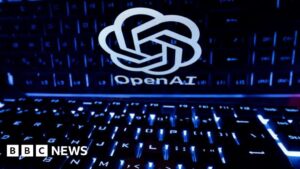Elon Musk Hints at Grok Just Hours After Alibaba’s Qwen3 Creates Excitement in US-China AI Competition

Alibaba Unveils Qwen3 AI Model: A Game Changer in Artificial Intelligence
Introduction to Qwen3
On Tuesday, Alibaba launched the third generation of its Qwen family of AI models. This release includes various versions, each with a distinct number of parameters. The standout model boasts an impressive 235 billion parameters, which Alibaba claims outperforms competing models like DeepSeek-R1 and OpenAI’s o1 reasoning models. Notably, the most efficient version of the Qwen3, which has 600 million parameters, might even be able to operate on smartphones, according to expert assessments.
Competitive Landscape in AI
Shortly after Alibaba’s announcement, Tesla’s CEO, Elon Musk, also made headlines by sharing on his microblogging site, X, that his company xAI plans to release an early beta version of Grok 3.5 for SuperGrok subscribers. Musk emphasized that this new AI can accurately address technical queries related to rocket engines and electrochemistry, showcasing the growing competition in the AI sector.
The AI Race Heats Up
The launch of the DeepSeek-R1 model earlier this year marked the commencement of a renewed AI race among tech giants. This competitive environment has led to a quicker rollout of new AI models, many of which prioritize energy efficiency and affordability. The DeepSeek models, recognized for their cost-effective high-performance capabilities, have sent a clear message to American developers about the need to innovate and improve.
Recent Developments from Major Players
In addition to Alibaba, several other major tech companies in China, including Baidu, ByteDance, and Tencent Holdings, have updated their foundational AI models in recent months. These updates are pushing their performance closer to that of leading American models like Google’s Gemini 2.5 Pro, OpenAI’s o3 and o4, and Meta Platforms’ Llama 4.
China’s Rapid Advancement in AI
A recent report by Stanford University highlighted China’s swift progress in closing the gap with the U.S. regarding the development of cutting-edge AI models. The open-source models emerging from China have gained significant popularity among developers and users alike. In fact, Alibaba’s Qwen has established itself as the largest open-source AI ecosystem in the world, boasting over 100,000 derivative models—outnumbering those based on Meta’s Llama.
Importance of Open-Source AI
The growth of open-source AI platforms is pivotal in democratizing access to advanced technology. They allow developers from various backgrounds to contribute to and utilize these models, fostering innovation and creativity. The success of Alibaba’s Qwen, with its extensive ecosystem, serves as a testament to the potential for open-source technology to drive advancements in AI.
Benefits of Efficient AI Models
The development of efficient AI models is not just a technical achievement; it has significant implications for various sectors, including healthcare, finance, and transportation. Models that can run on devices like smartphones can make advanced AI accessible to a broader audience, enabling new functionalities in everyday applications.
Future Prospects
As competition in AI develops, it will be interesting to observe how companies like Alibaba, Tesla, and others respond to ongoing advancements. The progression towards more powerful, cost-effective, and energy-efficient AI models will likely continue to shape industries and influence global tech landscapes.
In summary, the release of Qwen3 by Alibaba marks a noteworthy milestone in the AI industry. The rapid advancements made by Chinese companies in comparison to their American counterparts signal a significant shift in the technology landscape, one that promises to unlock new opportunities and challenges in the world of artificial intelligence.






